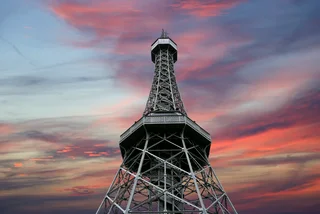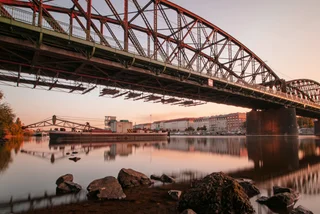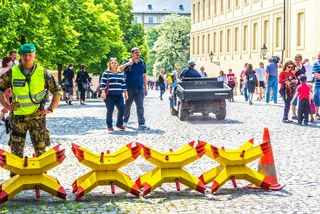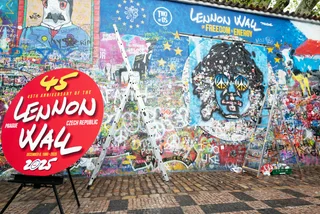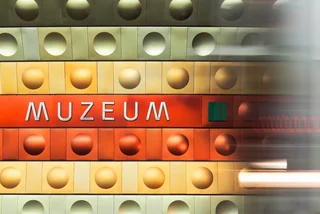The cable car in Petřín will get a new look. The Prague Public Transit Company (DPP) has announced an international design competition for a new car design, one of the steps toward modernizing the Prague landmark.
The new look will be selected by February 2022, and all the submitted proposals, including the first and second place winners, will be presented to the public in March 2022. Passengers should be able to take the first rides by the end of 2023.
The competition is open to designers from around the world. DPP and Prague City Hall have allocated CZK 1.5 million in prizes and to reimburse participants' expenses. Czech and foreign designers interested in participating in the competition can submit applications and portfolios electronically until Nov. 1, 2021. The winner will be decided by a five-member expert jury.
Designers should create both the body and interior of two similar cable cars with a capacity of up to 120 passengers in each. DPP in a press release said it wants the design to be a timeless, modern, and innovative solution that respects the trends of public transport in the 21st century, as well as the genius loci and the fact that it is one of the most popular and most visited landmarks in Prague.

The Petřín cable car is unique, so the competition will not result in a prototype intended for mass production. The design of new cars should be based on the manufacturing technology currently on the market.
“The cabin of the cable car to Petřín has been changed historically approximately every 30 years. Each of the generations has brought a unique design, and it will be interesting to follow new ideas,” Prague Deputy Mayor Adam Scheinherr, who is also chairman of the DPP Supervisory Board, said.
"There are few means of transport in the world from which the passenger would have such an exclusive view as from the Petrin cable car. Its attendance figures exceed even Prague Castle. The cable car to Petřín is a tourist and transport icon of Prague, it deserves to be given a unique and timeless design,” he added.
The new cars that emerge from the competition should be able to serve Praguers and visitors for another 30 years. “We expect that the clever design and the new interior will allow the current capacity of the cable car to Petřín to be further increased,” Scheinherr said.
Jan Šurovský, a member of the board of directors and technical director of DPP for surface vehicles, recalled how, as a little schoolboy, he walked where the cable car used to go, and there were only abandoned remnants left. “I was very enthusiastic about the resumption of operations in 1985, and I can't wait to see how the competitors will surprise us with their approach, and especially their designs,” he said.
Jury member and DPP metro architect Anna Švarc oversees the architectural design of existing station modernization projects and is also in charge of the visuals of the new metro D line.
“The design of the cabin of the new cable cars to Petřín should be user-friendly and visually correspond to the 21st century," she said. “At the same time, it must respect the requirements of today's society in the form of historical, but also economic and environmental contexts.”
This competition is only for the design. Other competitions will be announced for the actual production of the cable cars, and changes to the stops and platforms.
The cable car to Petřín has been part of Prague's public transport for almost 130 years. The current cable car is the third generation of this vehicle. Each lasted in service for about 30 years before being replaced by more modern cars. The current one has been serving for 35 years.
The cable car ride to Petřín takes four minutes and its two cars reach a height of 130 meters. Passenger transport is provided by two wagons suspended on a common tow rope, moving along a single-track track with a split halfway up.
The cable car carries more than 2 million passengers a year, which is more than 290 passengers per hour. Since 1985, it has been used by almost 56.5 million people. In 2020, it was the most-visited attraction in the Czech Republic, but that was due to Prague Castle being closed for much of the time. In pre-Covid times, Prague Castle consistently topped the list.
Although it might seem that the primary users of the cable car are tourists, as its top station is near the Petřín Lookout Tower, a significant number of users are also residents of Strahov and students. Petřín Hill is one of the steepest in Prague and reaching its peak by car or bus is not convenient. Due to the distinctive topography of Prague, the cable car is also widely used by cyclists. In winter, it is also used by sledders and skiers.
The cable car to Petřín is historically divided into three life stages: From 1891 to 1920, it had a water-powered drive, a track length of 396.5 meters, and could transport 50 people. Service was sporadic during World War I, and for economic and technical reasons, it shut down in 1920.
The All-Sokol rallies at the then-new Strahov Stadium renewed interest in service, and the system was rebuilt. From 1932 to ’65, it had an electric drive, track length 511 meters, and a capacity of 105 people. Service stopped in 1965 due to poor geological conditions under the track. A landslide in 1967 put an end to repair efforts.
As in the 1930s, interest in re-establishing the cable car was due to sports events at Strahov. This time it was the Spartakaid, which featured mass synchronized gymnastics. Service resumed in June 1985 with a new track extending 510.4 meters and a transport capacity of 100 people. It has been running ever since, though it closes often for routine maintenance.












 Reading time: 4 minutes
Reading time: 4 minutes 





